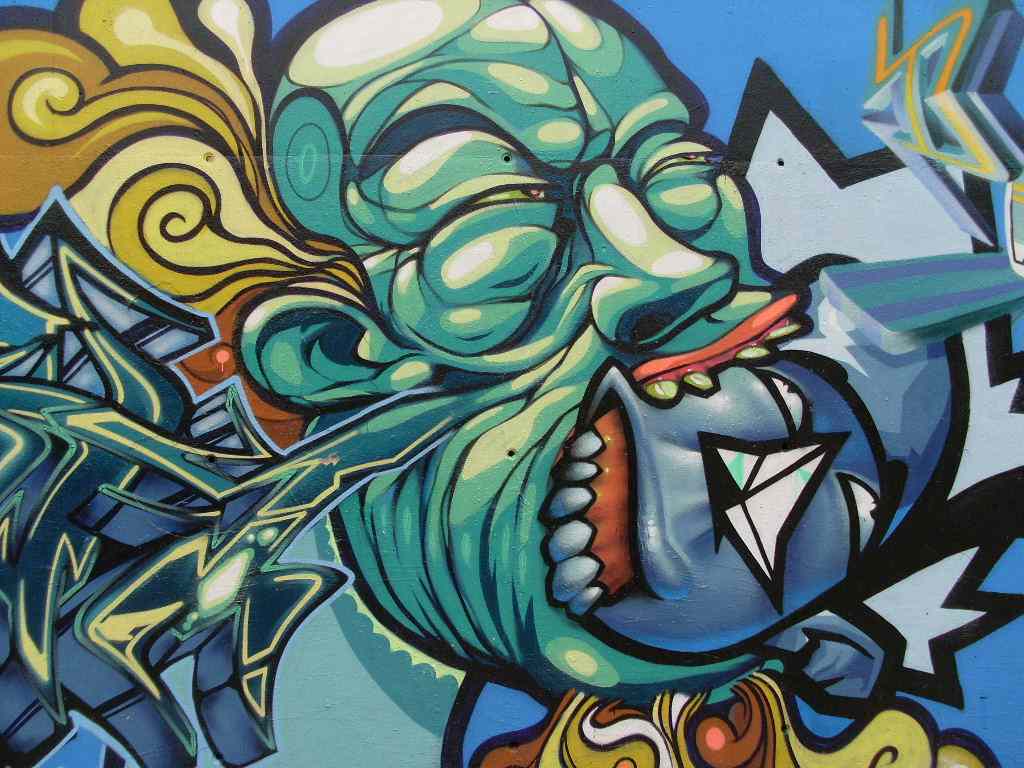
Preminger also commissioned him to do his next two films; Man with the Golden Arm (1955) and Anatomy of a Murder (1959). Encouraged by the reception of his work, Bass demonstrated his bold and stunning creativity for these projects. Using, photographs of the actors in primary grayish colors of blue, red and yellow in a tense and fragmented composition of irregular black rectangular surfaces, surrounding an ominous crooked black paper-cut-out of a heroin addict�s arm Bass created a masterpiece of agony and tension for The Man With Golden Arm. It is said that; when Preminger's movie arrived at US movie theatres in 1955, a note was stuck on the cans - "Projectionists � pull curtain before titles" -- Until then, the lists of cast and crew members which passed for movie titles were so dull that projectionists only pulled back the curtains to reveal the screen once they�d finished. But Preminger wanted his audience to see The Man with the Golden Arm�s titles as an integral part of the film.
 | | Man with the Golden Arm (1955) |
 | | Man with the Golden Arm (1955) - the German version |
*
 | | Titles for Man with the Golden Arm (1955) |
For Preminger's Anatomy of a Murder, Bass minimized his composition into two irregular rectangle surfaces in red and orange, juxtaposed vertically, with the top one in orange incorporating a fragmented corpus, containing the title of the film and the name of the director in an compositionally integrated typeface, and the red rectangle underneath simply showing the name of actors. Bass's philosophy behind such designs was "symbolize and summarize."
 | | Anatomy of a Murder (1959) |
The Man with the Golden Arm, established Bass reputation as the master of film title design. In 1956 Mike Todd asked him to design the title sequence for Around the World in 80 Days, Bass produced a striking mini animation for the sequence, which was placed at the end of the movie. Thus, when the spectators getting ready to leave, the titles came on, and almost always, the entire audience set down again to watch the magnificent short animation.
 | | Film Title for Around The World In 80 Days, 1956 |
In 1958 Bass designed the title sequence and poster for Otto Preminger's keen-eyed adaptation of the Francoise Sagan novel "Bonjour Tristesse". He captured the essence of the movie which was placed among the top 10 films of the year in Cahiers du Cinema's year-end critics' poll (with Francois Truffaut, Jean-Luc Godard, Claude Chabrol and Eric Rohmer all voting). Bass poster were a striking simple poster which in the words of Martin Scorsese was "an emblematic image, instantly recognisable and immediately tied to the film".
 | | "Bonjour Tristesse", Preminger's film adaptation of the Francoise Sagan novel, 1958 |
When Alfred Hitchcock saw Bass' work he immediately recognized his extraordinary talent for visual communication design. In fact, Bass was the creator of the stunning, riveting title sequence of Vertigo (1958) his first work for Hitchcock, in which he shot an extreme close-up of a woman�s face and then her eye before spinning it into a sinister spiral as a bloody red soaks the screen.
For North by Northwest his next Hitchcock commission in1959, Bass reduced the fa�ade of a skyscraper into a grid of vertical and diagonal lines, over which the credits swooped up and down, preparing the audience for a classic Hitchkaockesque suspense.
  | The Title Sequence for North by Northwest
Bass' title sequence for Hitchcock�s 1960 Psycho, tries to capture Norman Bates� split personality and conflicting psyche by brushing across the screen a number vertical bars in a frenzied pace. And, by this device he creates again a Hitchkaockesque masterpiece of visual suspense.
 | | The Title Sequence for Psycho. 1960 |
By the end of his life, Bass had created over 50 title sequences for Preminger, Alfred Hitchcock, Stanley Kubrick, John Frankenheimer and Martin Scorsese. He established the trend for the opening title sequence of films with animation and using graphic designs. In 1974. Bass returned to commercial graphic design. His corporate work included devising highly successful corporate identities for United Airlines, AT&T, Minolta, Bell Telephone System and Warner Communications. He also designed the poster for the 1984 Los Angeles Olympic Games. Among other films that Bass produced titles for are Broadcast News (1987), Big (1989) War of the Roses (1990), GoodFellas (1990), Cape Fear (1991), The Age of Innocence (1995), Casino (1995). In the early '90s, Bass was honored with an exhibit at the Visual Arts Museum in New York. He passed away from Hodgkins' lymphoma on April 25, 1996.
�In these titles I came to grips with what I think is the most challenging aspect of any creative endeavor and that is to deal with ordinary things. Things that we know so well that we ceased to see them. Deal with them in a way that allows us to understand them again. In a sense it�s making the ordinary extraordinary. For instance: Nine hours to Rama is about the nine hours which preceded the assassination of Mahatma Gandhi. By taking a clock � an ordinary object � an subjecting it to an unrelenting examination I hoped to create an intensification of one�s awareness of each moment.� Saul Bass

|
|










































